Reviews
Best Electric Scooters of 2022
Published
3 years agoon
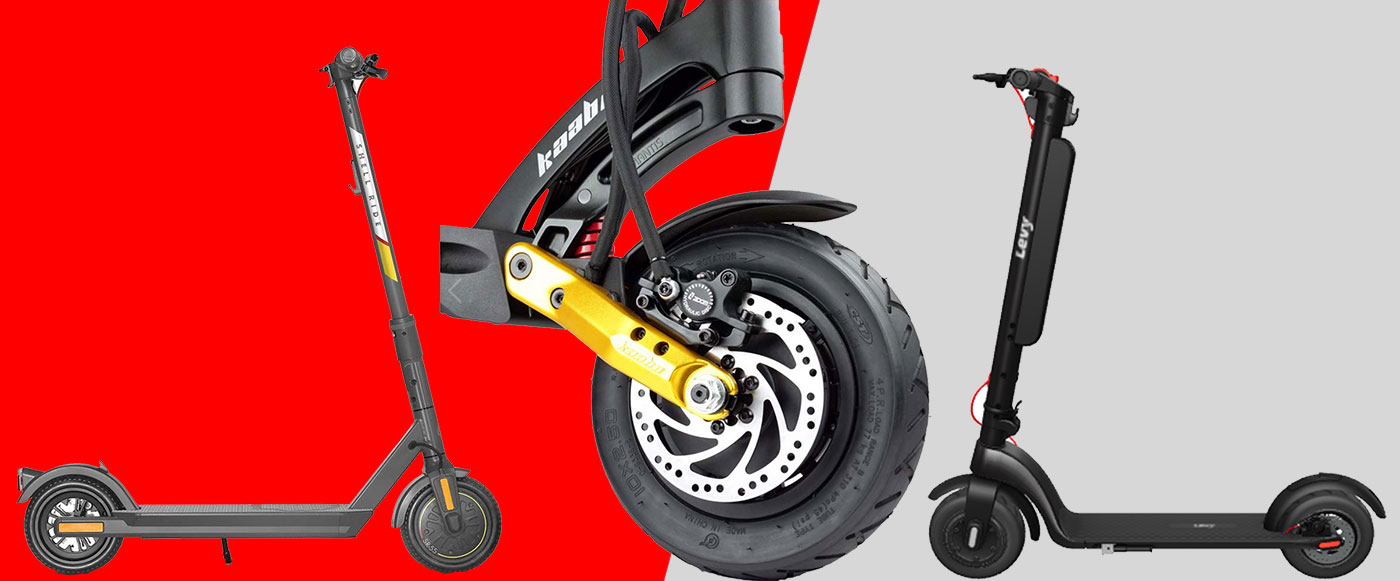
2021 was when we all returned to work, hoping everything would return to normal. Everything did return to normal as expected – including outrageous prices at the pump. Driving doesn’t have the same appeal as it used to, especially for those returning to city life. I haven’t owned a car since 2019 and have been patiently waiting for Elon to debut flying cars to make my city commute more bearable.
Well, disappointingly, 2021 did not bring us flying cars. But it did get us an onslaught of electric scooters. Traffic jams, rotating the block for parking, and expensive maintenance are things of the past. Electric scooters are replacing cars in cities, and there’s no better time to get one than now. What are you waiting for, gas prices to go down?
Unfortunately, the world of electric scooters is still a relative niche market, and you might not be able to tell a cheap Chinese knock-off brand from a reputable manufacturer. That’s why we decided to put together a list of the best electric and reputable scooters on the market today. We’ve tested about 20 electric scooters ourselves and have narrowed the list down to a few that we can confidently recommend. Enjoy!
Kaabo Mantis Pro SE from Voro Motors ($2299)
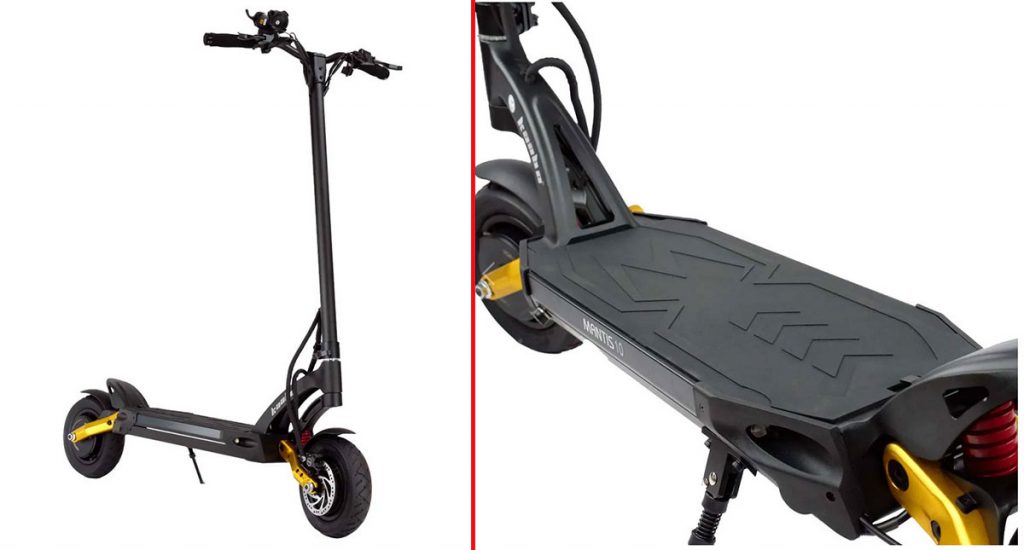
Let’s start with the biggest bang for your bucks electric scooter, the Kaabo Mantis Pro SE. SE stands for a special edition made in collaboration with Voro Motors. You can tell it’s an SE edition by the unique gold trims.
This scooter was designed for enthusiasts; however, it’s an easy one to recommend to anyone at this price range. Whatever you’re looking for in a scooter, whether it’s impressive build quality, craftsmanship, performance, portability (for its class), or value, the Kaabo Mantis Pro SE edition from Voro Motors has it all.

Packed with dual 1000W motors (combined 2000W), it’s the fastest and most powerful scooter on this list. The sheer power combined with world-class engineering lets you go from 0 – 15 miles in less than 2 seconds and max out at 45 miles per hour. That was not a typo. Yes…45 miles per hour. That’s twice the speed limit of most city roads.
Quick specs:
Price: $2299 (for 2022 24AH version)
Top speed: 45mph
Battery range: 40 miles
Scooter weight: 65lbs
Tires: 10″ tubed tires. 3″ wide
Max load: 330lbs
Motor: Dual 1000W Motors (2000W total)
Brakes: Zoom Hydraulic brakes
The Kaabo Mantis’ battery can last up to 45 miles, making it the longest-lasting scooter on this list. You can probably see why we put this one first.
The one downside would be the weight. At 65 lbs, it’s the heaviest scooter on this list. However, compared to most scooters in its class, this is one of the lightest high-performance scooters on the market.
You are getting something for all of that extra weight. The Kaabo Mantis is exceptionally well built and can handle up to 330lbs.
(Full review coming soon)
Shell Ride SR-5S ($649)

For those who don’t have $2299 to drop on a scooter, the Shell Ride SR-5S is the perfect alternative.
The Shell Ride SR-5S is a compact, fast, and reliable scooter with one of the best build qualities on a scooter at this price range. It’s hard to tell from pictures, but this scooter is exceptionally well built with a wobble-proof solid steel folding stem.
Everything about the SR-5S screams quality. Riding it around the city, we’ve never heard a single rattle or felt anything come loose. The handlebar is wide with a firm spatula grip. The bell is an actual bell instead of a spring-action mechanism used by cheaper scooters.
Quick specs:
Price: $629
Top speed: 15.5 – 20mph
Battery range: 18-20 miles
Scooter weight: 30.4lbs
Tires: 8.5″ semi-pneumatic
Max load: 220lbs
Motor: Front 350W Motor
Brakes: Rear disc brake & electric front brake
It has a range of 20 miles and a top speed of about 20 miles. These numbers will vary depending on your weight, road condition, and other environmental factors.
Three features separate the SR-5S from most other scooters. First is how secure and easy it is to fold and unfold the scooter. The stem uses a unique sheath sliding mechanism that lets you fold/unfold the scooter in less than 5 seconds. The locking mechanism is also secure, making it easier to carry around than most.
The second feature is how quickly the scooter starts up. Pressing the power button brings the scooter to life within 1 second, and you’re ready to go. The built-in display is simple, functional, and visible even on bright sunny days.
The third feature is the Shell Ride App. The SR-5S is one of few scooters with robust App integration. I was skeptical at first and thought the App may have been an after-thought. To my surprise, it’s an exceptionally well-designed interface that connects seamlessly with the scooter. You don’t need an App for any scooter, but it’s nice to see your average speed, total mileage, etc.
The one downside is the small 8.5 semi-pneumatic wheels. They’re a bit small for the speed this scooter can handle. At 12-15mph, you’ll be fine. However, at 18-20 mph, it can get risky on uneven roads.
If you’re looking for a lightweight and high-quality scooter to make short commutes in the city, you can’t go wrong with the Shell Ride SR-5S
Levy Plus Electric Scooter ($699)
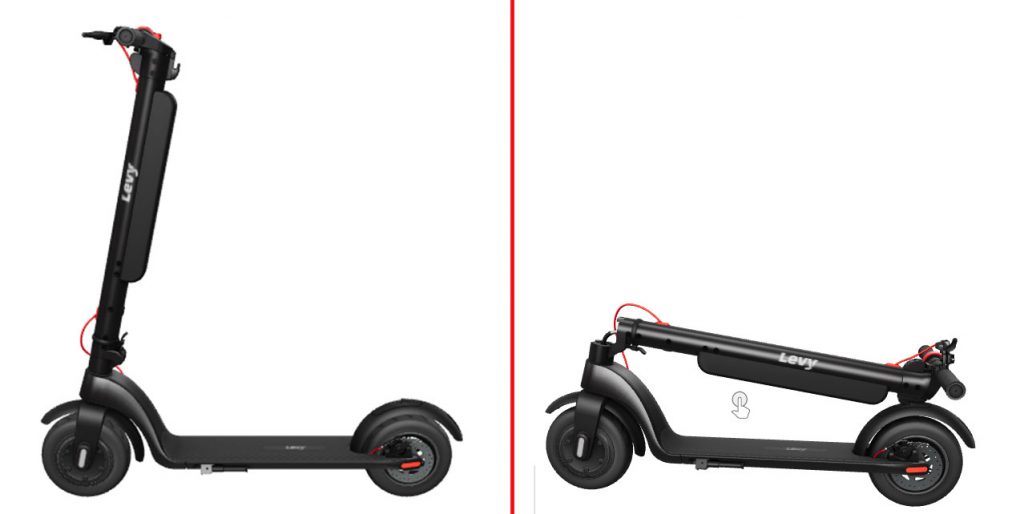
The Levy Plus is one of the lightest and most portable scooters on this list. Despite weighing only 30 lbs, it’s capable of 18 mph with a range of 20 miles on cushy 10″ pneumatic tires.
Quick specs:
Price: $629
Top speed: 18 mph
Battery range: 20 miles
Scooter weight: 30lbs
Tires: 10″ pneumatic tires
Max load: 220lbs
Motor: Front 350W Motor
Brakes: Rear disc brake & electric front brake
The battery is removable, however we didn’t feel like this was a very useful feature. Given the scooter doesn’t come with an extra battery. That will be an added cost. So most of the time, you’re just plugging directly into the scooter to charge.
The 1-step latching mechanism to fold and unfold is quick, easy, and offers wobble-free operation. The Levy Plus is one of the most accessible and most convenient electric scooters. Using the Levy Plus, I could get to work, board public transit, and bring the scooter into Starbucks with ease.
My one complaint would be the lack of app integration. Given that Levy does have an App for their Fleet products, I felt one should’ve been published for their scooters.
Glion Balto ($799)
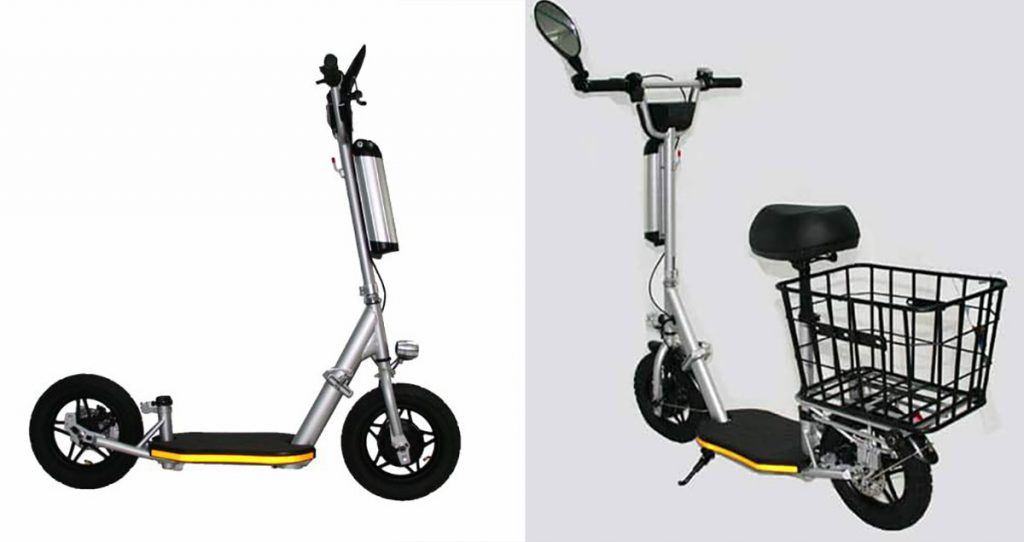
The Balto is already such a unique scooter that’s differentiating itself from anything on the market. We like that the team at Glion didn’t just use a copy/paste design and instead re-imagined what functionality would look like—introducing the Glion Balto, the only scooter that comes standard with a removable seat and grocery rack AND a high-torque 750W motor.
Quick specs:
Price: $799
Top speed: 17 mph
Battery range: 20 miles
Scooter weight: 38lbs
Tires: 12″ pneumatic tires
Max load: 255lbs
Motor: Front 750W Motor
Brakes: Rear disc brake & electric front brake
It has a top speed of about 17mph, a range of 20 miles, and a maximum load capacity of 255lbs. The removable 500W battery pack also doubles as a portable power station to charge your devices. However, you’ll need to buy a $139 inverted from Glion, sold separately, to use that feature. That may or may not be your favorite thing about the Balto.

What WILL be your favorite thing about the Balto are the massive 12″ pneumatic tires. These are the most oversized tires to have ever been fitted on a scooter. These tires are ready to take on poorly serviced city roads and potholes.
The one major downside with the Balto is portability. At 38lbs, the weight is manageable. However, it’s far too big even when folded to bring into public spaces. You’ll likely want to lock this outside on a bike rack.
I have to admit, the grocery rack in the back was not a selling point for me. However, I’ve grown to love it, especially when I need to make a quick trip to Aldi’s every week. If you’re looking to pick up girls on your scooter, look elsewhere (actually, don’t look at scooters altogether). But if you’re looking for an all-in-one scooter that’s great for commuting and grocery trips, there’s nothing better. The Glion Balto is screaming your name.
You may like
BeReal App: Will It Survive Its Instagram Clone?
Lesbian Bars Were Dying. Now They’re Making a Comeback
Wally Amos: From Cookie Mogul to Life’s Tough Lessons
What’s an MLM? How Does It Work and Why Is It Controversial?
Loom Review: Features, Use Cases, and How It Stacks Up Against Zoom
Explained: What Is the Deeper Connect Pico and How Does It Work?
Business
Loom Review: Features, Use Cases, and How It Stacks Up Against Zoom
Published
2 weeks agoon
May 21, 2025
Are you tired of keeping up with long email chains or trying to sync everyone in the team for a live call? If you answered yes, then Loom could be an efficient tool for you. In this Loom review, we’ll unpack how you can use Loom to explain complex ideas, give feedback, or walk someone through a task without going on a live call.
We’ll also explore its standout features, use cases, pricing plans, and how it compares to Zoom so you can decide if it fits your team’s workflow.
What is Loom?
Loom is a video messaging app that lets users record and share video messages with teammates and clients. Using Loom, you can record your camera, microphone, and desktop screen at the same time.
According to online Loom review, this is especially useful for individuals to create tutorials, demonstrations, and presentations, as well as to share feedback.
Loom users can choose to record with the Loom Chrome extension, the desktop app, as well as the iOS and Android apps.
Some of Loom’s clients include Brex, Intercom, Postclick, and more.
Loom Features
Loom has various features that allow it to seamlessly integrate into a company’s existing workflows.
Users can play Loom download videos within platforms like:
- Slack
- Jira
- Confluence
- Github
Why does this matter? Users will no longer be led to an external link, increasing their productivity by playing feedback videos within the platform.
Next, Loom video has an AI suite that can help teams work more efficiently. Using AI, the tool can:
- Automatically generate meeting notes and recaps, among other things
- Instantly create chapters in your videos, as well as CTAs and tasks
- Create text transcription and generate closed captions
To refine your videos further, Loom has features that can remove filler words and silence in a video.
Besides this, Loom also has a video-to-text feature. This is especially useful for asynchronous teams that need help with logging a bug issue, documenting a process, or performing a code review.
Loom Pricing
Loom pricing is generally straightforward. If you want to know if Loom is free, yes, it does have a free tier.
It has a free Starter plan for users who want to try out the app’s key features. It can accommodate up to 50 Workspace users, who are each entitled to up to 25 videos with a five-minute length cap.
Next, the Business plan is for teams that want unlimited videos and basic editing. It costs $15 per user per month if billed annually. Here, you can have unlimited members get basic waveform editing, remove the Loom Branding, and more.
According to Loom review, their most popular plan is the Business + AI plan, where teams can get advanced editing and access their AI suite. This plan costs $20 per user per month if billed annually.
Their premium plan is the Enterprise plan, which is best for companies that want to control and securely manage video content for the organization. If you’re wondering, “Is Loom safe to use?” This plan has advanced security and content privacy features as well as admin insights. Teams need to contact Loom’s sales team first to get a price quote.
Finally, Loom has a discount plan for educators as part of the Atlassian Education Program.
Use Case Breakdown
Here are a few Loom use cases:
- Loom review can be especially helpful for tech teams, as it can be used to narrate a bug issue. When an issue occurs, developers or testers can simply record the issue with Loom and report the issue to the concerned developers. It saves time and increases the turnaround time for bug fixes.
- Hiring teams and internal teams can also use Loom to document an internal process for onboarding purposes. Apart from this, it can also be used by customer-facing teams to create user guides on a platform or a new product feature.
- Sales teams can also use Loom to reach out to prospective clients. When cold emails are not friendly enough, sales teams can create personalized video content through Loom and stand out.
- Taking too long to get feedback from all stakeholders? Loom is great for product design teams to get asynchronous feedback from a global executive team. It’s great for instances where it’s difficult to get stakeholders in one meeting.
- Finally, Loom is great for educators and academics who want to create videos for remote classes.
Loom vs. Zoom
While their names sound the same, Loom and Zoom have different fundamental use cases. In terms of Loom review, Loom is best used to record and send videos, which can be used for demos, tutorials, and feedback. In terms of use cases, Loom is more catered to asynchronous communication and screen recordings.
Meanwhile, Zoom is best used for hosting live meetings and large conferences. It has features like breakout rooms and virtual backgrounds. While you can use Zoom to record videos yourself, Loom is more optimized to share video links with teammates and clients.
Final Thoughts: Who Will Get the Most Out of Loom?
Loom is best for companies that need videos for their day-to-day work communication. Whether for external or internal communication, it is great for clients who work asynchronously. In fact, most of their clients include those in the tech and product space.
Their product is useful for tech, sales, and product design teams that need to align with cross-functional teams. Loom is also best for companies that want to tighten their internal feedback loop, demonstrate processes, and get quick updates.
Educators, coaches, and course creators can also benefit from Loom’s features. The platform makes it easy to create clear, engaging instructional videos that students or clients can watch at their own pace. With features like closed captioning, video chapters, and transcription, Loom helps streamline learning and knowledge sharing.
Finally, to sum up this Loom review, freelancers and consultants who want to build stronger relationships with clients may also find Loom useful. Just like gadgets that boost team connectivity, like the Deeper Connect Pico, the global workforce can benefit a lot from Loom. Personalized video updates, walkthroughs, or proposals can set them apart, adding a human touch to digital communication that static emails or text-based reports often lack.
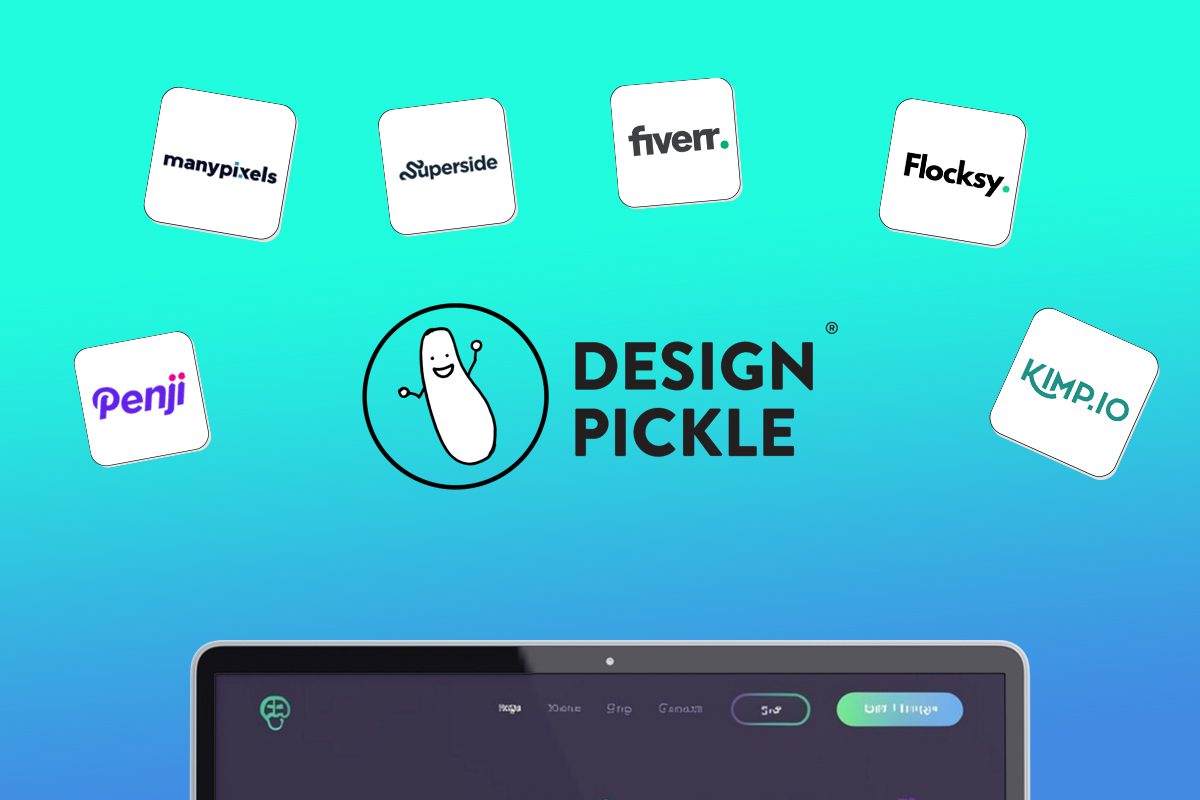
Looking for an alternative to Design Pickle? We have just the list for you.
Design subscriptions are now popular amongst entrepreneurs, small businesses, and even corporate giants. The model is simple: you pay a flat monthly rate and get as much design help as you need – websites, custom illustrations, branding assets, ad design, packaging design, and more.
In a world where traditional agencies charge exorbitant fees and the freelance market is hit or miss, more and more brands are opting for this simple, comprehensive design solution. If you have no time to vet freelancers for every project and no budget for a team of in-house designers, this might be a perfect fit for you.
We went ahead and ranked the top unlimited graphic design companies in the industry that rival Design Pickle.
1. Penji
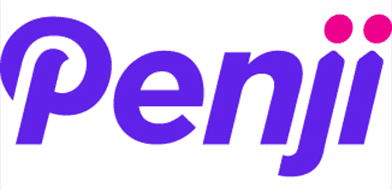
One of the top competitors of Design Pickle is Penji. This is because Penji offers a very comparable gamut of design services at a lower price point. Penji is one of the biggest unlimited graphic design providers in the industry and has consistently received strong reviews (4.8 average) across sites like Trustpilot, Facebook, and Google.
Penji stands out for its responsive customer service and exceptional designers. Their user-friendly platform makes requesting designs simple, allowing users to easily navigate and communicate with their designer. Each tier of Penji’s subscription is tailored to cater to diverse requirements, be it ad creatives, presentation designs, or motion graphics, ensuring various types of clients get the most value for their dollar.
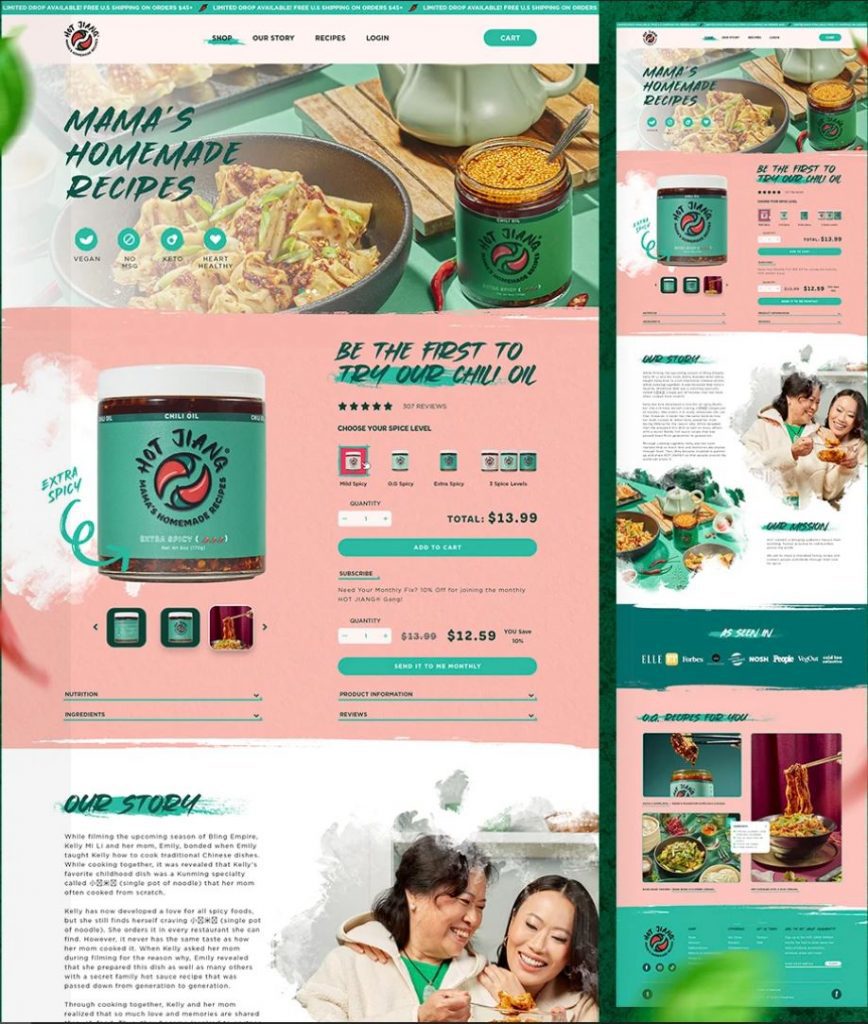

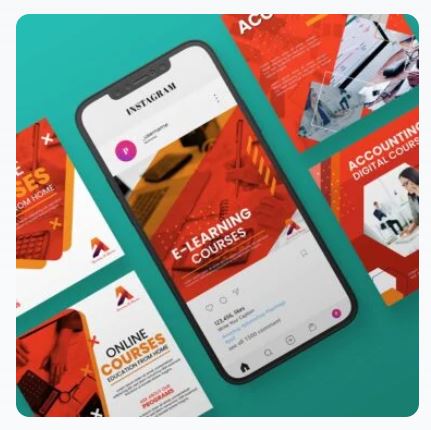

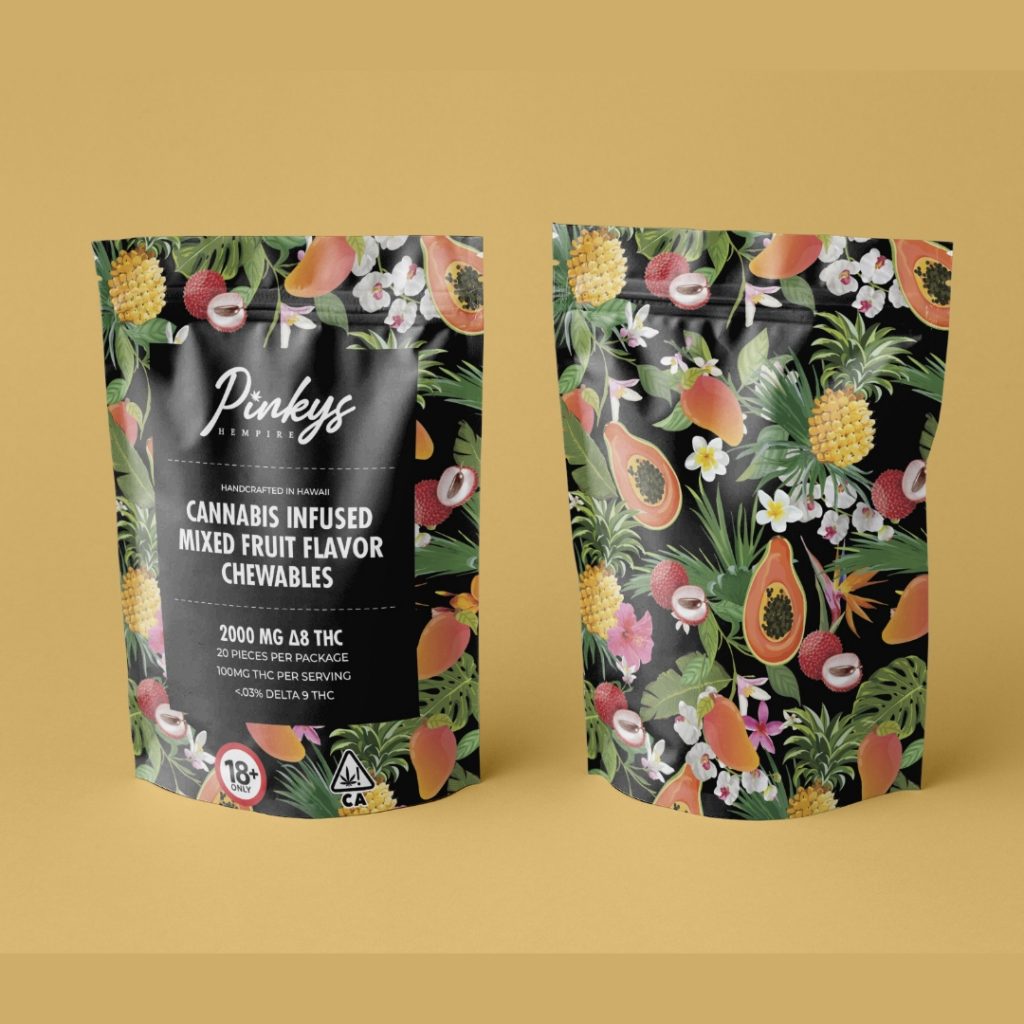
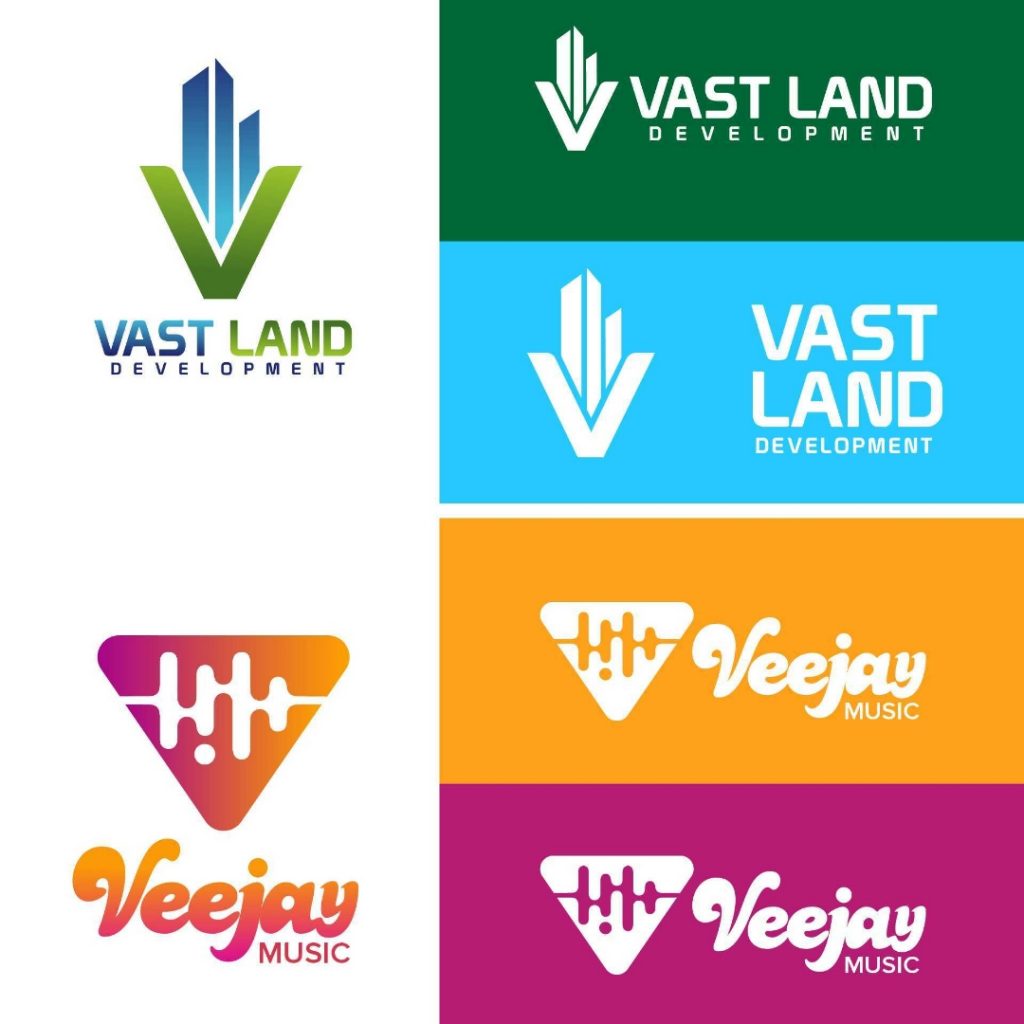
Why we recommend:
– Designers are matched to your project based on their skillset and your specific need
– Penji offers logo designs, illustrations, and UX/UI for apps & websites
– Their customer support is responsive and quick
– There are over 100 design services to choose from
– You get access to a Project Manager or Art Director at higher tiers
Price: $499-$1497
2. Superside

Superside is a well-known company offering scalable design solutions that are suitable for brands of various sizes, from startups to large enterprises. Their services are priced significantly higher than other graphic design services, so they’re best for companies with larger budgets.

Why we recommend:
– You get access to a dedicated design team
– They offer static and motion ad creative for testing ads
– They’ve worked with big brands like Google, Shopify, and Meta
– Superside’s video production quality is top notch
– If you run out of design credits, you can order more at any tier
Price: $5,000-$13,000 (50-150 credits)
3. Fiverr

Fiverr is the only non-subscription service on the list, but many people don’t realize that individual freelancers can now offer subscriptions on Fiverr. The platform is famous for its wide range of freelance services at an incredibly affordable price. Typically, Fiverr matches you with a freelancer for a one-off project like a logo or website design. You might be able to get a logo for just $15, but in-demand designers might charge you $1000-2000 for a website.

Why we recommend:
– Fiverr manages the relationship, making financial transactions safer
– There’s no need to waste time or money hiring a full-time designer if you don’t need one
– You can choose from hundreds of designers to find the exact style you like
Price: varies widely (You might be able to get a logo for just $15, but in-demand designers might charge you $1000-2000 for a website.)
4. Flocksy

Flocksy is another unlimited graphic design service much like Penji and Superside. The company has a decent reputation online and offers comparable services to other design subscriptions. However, there are two major differences: They offer copywriting and video editing. Flocksy gives you access to an easy-to-use platform for submitting requests, tracking progress, and communicating with the creative team.

Why we recommend:
– Flocksy offers video editing and copywriting in their two highest tiers
– You can get Zapier integrations at every tier if desired
– They offer a 14-day money back guarantee if you choose not to continue
Price: $499-$1695
5. ManyPixels

Manypixels is another growing company that offers a similar service to Design Pickle at a comparable price. The company boasts clients like Teachable and Buffer. You can also get free stock assets from Manypixels, which is a nice perk to complement unlimited designs.

Why we recommend:
– Have an intuitive online platform for communication and storing files
– Pay monthly, quarterly, or yearly (save 10% quarterly, 20% yearly)
– Get a designated designer at the highest tier and collaborate in real-time
Price: $549-$1299
6. Kimp
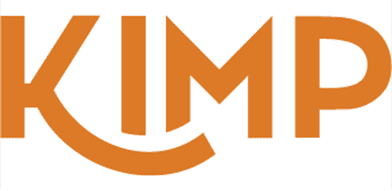
Kimp is similar to other graphic design subscription services but offers unique pricing tiers. Unlike its competitors, Kimp provides both design and video services without requiring separate plans, ensuring a comprehensive creative solution. Clients also benefit from dedicated design and video teams, ensuring consistent quality and brand alignment across all projects.

Why we recommend:
– Choose only what you need: video, graphics, or both
– A speedy 2-4 day turnaround for video projects
– Kimp offers a 2-month discount as you’re getting started
– Get free stock video, audio and images in their top tier
Price: $599-$995
7. DesignJoy

DesignJoy came along just two years after Superside and have similar price range. They’re a big name in the design industry because they’ve worked with brands like Google and Verizon. Their standard tier allows you the manage unlimited brands along with unlimited users and stock photos.

Why we recommend:
– Webflow development available on both tiers
– Unlimited users on their higher tier
– You can refer a friend and get 5% monthly recurring commissions
Price: $4,995-$7,995
8. Delesign

Delesign has existed since 2017 and has leveled up its services each year. For the same price as many others on the list, Delesign also offers 2D animation videos. We’re not sure of the quality, length, or requirements, but this is a great bonus for brands that want to incorporate it.

Why we recommend:
– 2D animation videos are included in the package
– Guarantees quick turnaround times for initial drafts: 24 to 48 hours
– Zapier and Slack integrations on every plan
Price: $599 – $1799
9. No Limit Creatives
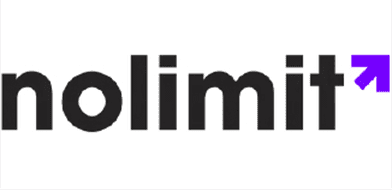
Roughly the same age as Delesign, No Limit Creatives is another design services that has grown in notoriety in recent years. They’re unique in that they offer 4 tiers for graphic design while most offer 3. Like Kimp, they have a tier for graphics and video, and each tier allows a different number of requests at a time. Their lowest price tier uses design credits much like Superside’s model.

Why we recommend:
– Get a dedicated design team on 3 out of 4 tiers
– A whopping 3 requests at a time are available at the highest tier
– The highest tier also offers real-time communication through Slack
– NLC provides video editing and video creation
Price: $499-1499
10. Kapa99

Kapa99 is a small company but they compete well with larger competitors like Design Pickle. They’ve been around since 2014 and thus have had plenty of time to perfect their craft. Kapa’s tiers are split into just two: Business and Business Express. Express offers speedier delivery for clients with more pressing deadlines.
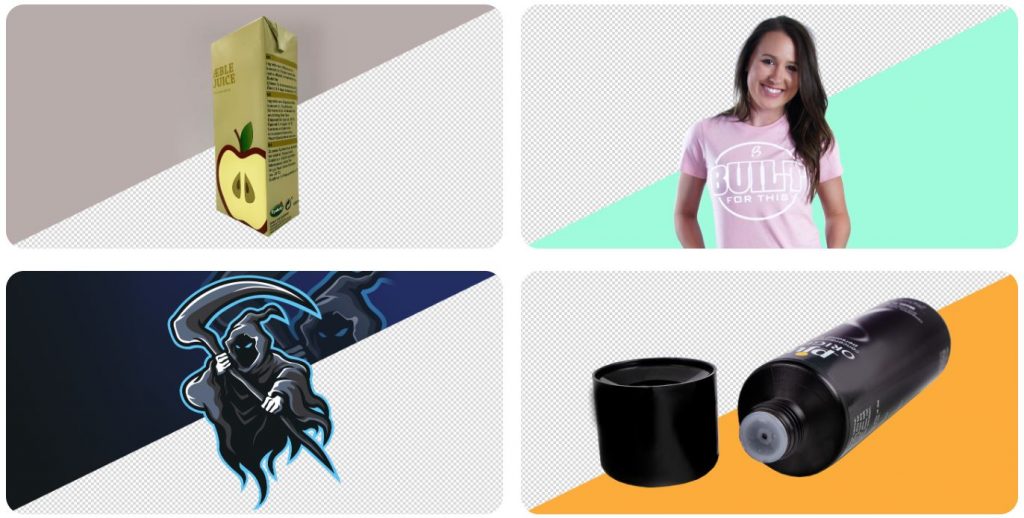
Why we recommend:
– They offer a significant discount for the first two months of your subscription
– There’s no limit to how many ‘active tasks’ you can have on your dashboard
– Native Adobe source files
– Canva file delivery
Price: $499-$999

Air guns are used for pest control, small game hunting, recreational shooting or plinking, and competitive sports. There are several air rifles, but a bullpup weapon stands out. The overall length of the air gun can be significantly decreased without reducing the barrel length. This enables a bullpup weapon to be more easily maneuvered and concealed in tight spaces than a traditional weapon with a similar barrel length. Whether you are an avid air gun enthusiast or a newcomer looking for a versatile air rifle, the Ataman M2R Bullpup can be the best option. In this article, we will explore the unique features of the Ataman M2R Bullpup.
Ataman is a Russian brand known for manufacturing air guns. The company is famous for developing high-precision weapons for various shooting purposes, including target shooting and hunting. This includes the Ataman M2R Bullpup air rifle, Type 2 Walnut model.
Overview

With the legendary expertise of Russian gunsmiths, these guys bring distinct details out in this model. It features a Lothar Walther barrel and an ergonomic walnut stock. In addition, the adjustable trigger provides a personalized setup. Overall, the Ataman M2R Bullpup is an ultra-lightweight and versatile air rifle. Learn more about its specifications in the next section.
The M2R air rifles are a leading product of the Ataman factory. In producing M2R rifles, the company uses barrel blanks from the German brand Lothar Walther. In addition, the energy source of this PCP pneumatics rifle is a high-pressure tank with a volume of 250 cubic meters and a working pressure of 300. The design of the M2R air rifles allows for adjustments in stroke, force, and length.
Ataman M2R Bullpup Technical Specifications

The Ataman M2R Bullpup has advanced features, making it a popular choice for better performance and maneuverability. When Ataman designed this air rifle, they focused on creating a compact, maneuverable option for tight spaces. It’s noticeably smaller compared to other rifles we’ve checked out. The clockwork trigger is a standout feature for its easy customization, providing a match-grade experience, and the built-in pressure regulator ensures your shots stay consistently accurate.
Below are the technical specifications of Ataman M2R Bullpup:
Caliber: .22, .25, .357
Velocity: Up to 980 FPS
Barrel Style: Rifled
Barrel Length: 520 mm
Energy: Up to 55 foot-pounds
Safety: Manual
Loudness: 4-Medium-High
Shots Per Fill: 4
Weight: 3.8 kg.
Pros:
- Ambidextrous walnut stock
- Lothar Walther’s free-floating barrel
- Self-indexing magazine
- Integrated Picatinny rail
- Built-in air pressure gauge
- 1-Year Limited Warranty
Cons:
- Heavier than other brands
- Rather loud
What are the Other Leading Brands of Air Guns?
Here are some favorite options to help you choose the best air gun for your next hunting adventure.
1. AirForce Texan LSS Hunter Combo
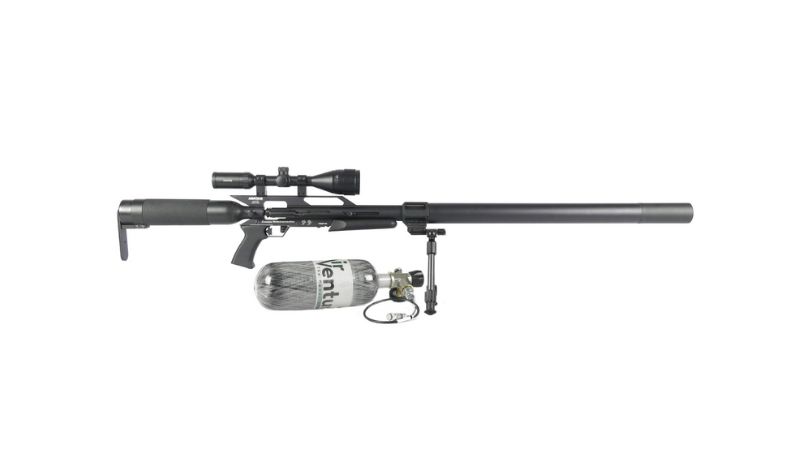
One great feature of Airforce Texan LSS is its variety of options. Customers can choose among the .45, .357, and .30 caliber barrels depending on their preference and purpose. You also get a scope, air tank, bipod, and other goodies in the combo kit. Plus, it offers a lifetime limited warranty.
Features:
Caliber: .30, .357, .45
Velocity: Up to 1100 FPS
Barrel Style: Lothar Walther
Energy: Up to 600 foot-pounds
Safety: Automatic on cocking
Pros:
- Pressure relief device
- Adjustable power
- Two-stage, adjustable trigger
- Relatively quiet firing
- Low-effort, side-lever cocking
- Lifetime Limited Warranty
Cons:
- Expensive
2. Seneca Wing Shot MKII Shotgun
This air rifle is customizable to suit the preferences of upland or bushy-tail hunters. Thanks to the weapon’s removable choke, which will reduce the inner barrel down to .486 feet from .494 feet. This feature will enable a consistent shot stream and a 12-foot spread at 20 yards out.
Features:
Caliber: .50
Velocity: Up to 1130 FPS
Barrel Style: Smooth Bore
Energy: 245 foot-pounds
Safety: Manual
Loudness: 5-High
Shots Per Fill: 5
Pros:
- Removable choke.
- Pre-charged pneumatic (PCP)
- Single air reservoir (244cc)
- Built-in manometer
- 1-Year Limited Warranty
Cons:
- This air rifle is very loud.
3. Hatsan Blitz
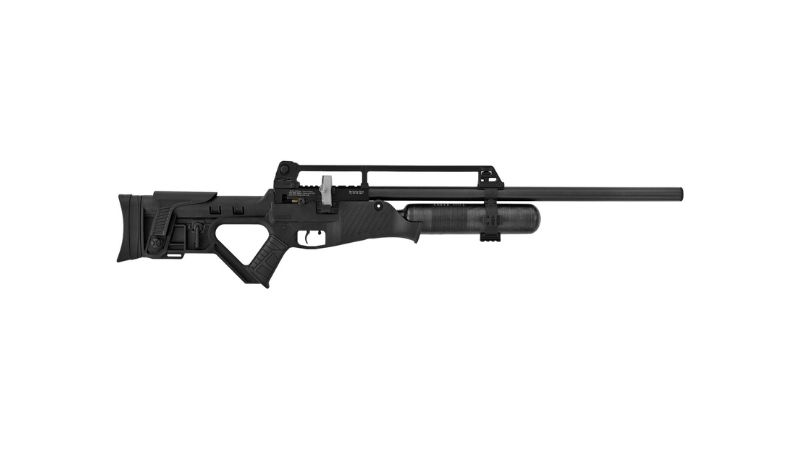
The Hatsan Blitz is a fully-automatic air gun with a pre-charged pneumatic tank. It is among the top choices for full-automatic PCP air rifles. This automatic feature makes it a thrilling experience at the range, providing a Rambo-esque feel. Likewise, it can be effective for hunting coyotes and other small vermin.
Features:
Caliber: .22, .25, .30
Velocity: Up to 1050 FPS
Barrel Style: Rifled
Energy: Up to 53 foot-pounds
Safety: Manual
Loudness: 3-Medium
Shots Per Fill: 130
Pros:
- Full or semi-automatic mode
- 1,000 rounds/minute cyclic rate
- Detachable SwingLoad Magazine
- Combo 11mm dovetail and 22mm Weaver optics rail
- Three Picatinny forearm accessory rails
- Built-in manometer
- Available in 1-Year Limited Warranty
Cons:
- Full auto mode consumes many pellets.
4. Benjamin Bulldog .357 Bullpup
If you are looking for the best big-bore air gun for hunting, consider this Benjamin Bulldog Bullpup air gun. It is a fine hunting weapon. However, the Ataman M2R Bullpup still stands out in accuracy and versatility.
Features:
Caliber: .357
Velocity: Up to 910 FPS
Barrel Style: Rifled
Energy: 200 foot-pounds
Safety: Manual
Loudness: 4-Medium-High
Pros:
- Rubber recoil pad
- 2-stage non-adjustable trigger
- Picatinny optics and accessory rails
- Ambidextrous synthetic camp stock
- 5-Year Limited Warranty
Cons:
- Loud
5. Umarex Hammer
Umarex Hammer is a .50 caliber big bore air rifle that fires pellets at 700 foot-pounds of energy. Airgun Depot considers it the most potent PCP big-bore air gun.
Features:
Caliber: .50
Velocity: Up to 1000 FPS
Barrel Style: Rifled
Energy: 700 foot-pounds
Safety: Manual
Loudness: 5-High
Shots Per Fill: 4
Pros:
- 2-round chamber magazine
- Built-in manometer
- Weaver/Picatinny optics rail
- AR Magpul-style grip
- Accept M-LOK®attachments
- 5-Year Limited Warranty
Cons:
- Requires 550-grain lead pellets for optimal power

BeReal App: Will It Survive Its Instagram Clone?

Lesbian Bars Were Dying. Now They’re Making a Comeback

Wally Amos: From Cookie Mogul to Life’s Tough Lessons

What’s an MLM? How Does It Work and Why Is It Controversial?

Loom Review: Features, Use Cases, and How It Stacks Up Against Zoom

Explained: What Is the Deeper Connect Pico and How Does It Work?







